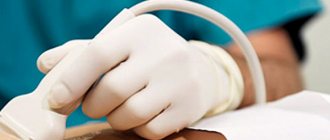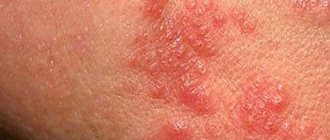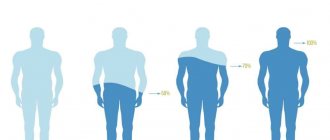SPECIALISTS Gynecologist Gynecologist-endocrinologist Pediatric gynecologist Mammologist-oncologist Dermatologist Hirudotherapist Intimate plastic surgery Doctor Contour plastic doctor Ultrasound doctor SERVICES AND PRICES Gynecology Mammology Ultrasound diagnostics Paid tests Intimate surgery Contour plastic Treatment for women PROMOTIONS AND DISCOUNTS Students Teams Friends and subscribers am For residents of the region For pensioners Promotions in clinic
Have growths on the labia, rashes and pimples near the vagina? Maybe there is a feeling of “something extra” near the anus and there is an itching of the anus? What is it, the reasons and how can a woman get rid of genital warts? Cauterization of condylomas is a procedure for eliminating viral skin lesions. Removal is associated with physical discomfort and some nuances, so it should take place in a medical center under the supervision of a gynecologist.
Intraductal papilloma (ductal papilloma).
Removal of papilloma on the nipple
Ductal papilloma (intraductal papilloma) occurs near the nipple; removal of papilloma on the nipple is possible using electrocoagulation under local anesthesia. Signs of intraductal papilloma (or nipple papilloma) are the appearance of blood-stained or transparent discharge from one nipple. Ductal papilloma is often a precancerous condition. Treatment of papillomas on the nipple and intraductal papilloma is carried out by a mammologist-oncologist.
On the picture:
papillomas on the face
The human papillomavirus (HPV) is widespread throughout the world. HPV causes warts, papillomas, and genital warts. Different types of human papillomavirus (there are more than 100 of them) cause different diseases.
Genital warts are small skin-colored formations, their size ranges from 1 mm to several centimeters. Genital warts can form on the genitals, near the anus, on the face, even in the mouth, on the body, abdomen, in the groin area, and in the armpits. This is a viral disease. The causative agent of genital warts is the human papillomavirus (HPV).
In men, the glans penis and frenulum of the foreskin are most often affected. In women, damage by the human papillomavirus appears on the labia, clitoris, vagina, and cervix.
Genital warts can be localized around the anus.
From single ones, genital warts can grow into rashes that can spread, taking on the appearance of cauliflower. “High-risk” HPV types (16, 18, 31, 33 and 35) cause cervical dysplasia and can become malignant.
Diagnostic methods
A qualified gynecologist can make an accurate diagnosis for condylomas and viral warts in the vagina. Based on the examination, the specialist draws conclusions about the development of papillomavirus infection. Additionally, the woman is prescribed an extended colposcopy and PCR test.
A cytological examination of a smear from the cervical canal area allows one to identify atypical cells and confirm or exclude the presence of dysplastic processes in the cervix. Immunological studies help determine antibodies to papillomavirus in the blood. Additionally, it is necessary to conduct screening for common sexually transmitted diseases and HIV infection.
Genital warts - routes of infection
The route of infection with HPV is contact. But household infection with the human papillomavirus is also possible. When a person comes into contact with infected skin or mucous membranes of a sick person, HPV infection occurs. Very often, this does not appear outwardly; the virus may not show itself for a long time. But under certain conditions (decreased immunity, concomitant diseases), HPV is released onto the surface of the skin and mucous membranes. In a latent (dormant) state, infection of other people with HPV is rare. From the moment of HPV infection to the appearance of genital warts, it can take from several weeks to several years.
Photo of condylomas on the genitals and in the perianal area
| In the photo: condylomas on the foreskin and on the frenulum of the penis | In the photo: genital warts in the perineum | In the photo: papillomas in the anus |
There are “low-risk” and “high-risk” types of HPV. Genital warts are caused by “low-risk” HPV types 6 and 11.
Routes of infection
HPV transmission occurs primarily through sexual contact.
The possibility of becoming infected during sex is 46–67%.
Homosexuals have a higher incidence of the disease.
Recently, there have been more and more cases of detection of the virus in the amniotic fluid during pregnancy.
Infection of children by parents is possible.
The incubation period of the disease ranges from a month to a year.
Typically, condylomas appear 3 months after sex with an infected partner.
Treatment of papillomas, condylomas (HPV)
- performed on the body by a dermatologist-cosmetologist,
- on the male genitals - urologist,
- for women - a gynecologist,
- in the area of the anus and perineum - a proctologist.
There is now a treatment that is highly likely to eliminate HPV infection. Modern treatment for genital warts can not only remove or reduce the symptoms of the disease, it eliminates the HPV infection and prevents further transmission of the virus in many cases. However, after any treatment method, relapses are possible.
- Laser removal of genital warts is performed under local anesthesia.
- Electrocoagulation, removal of genital warts using high temperature, is carried out under local anesthesia.
- Interferon blockades (genital warts are injected with an interferon drug).
- Radio wave removal of condylomas. Today, the most effective method for removing genital warts. There is no trace left of condylomas.
Therapy for pregnant women
Genital warts in the vagina can appear during pregnancy due to a weakening of the body's natural defenses. In this case, it is necessary to contact a gynecologist as soon as possible so that the specialist can conduct a comprehensive examination and identify possible concomitant diseases, such as thrush. Surgical removal of genital warts is not performed during pregnancy, since any surgical interventions are contraindicated for the expectant mother.
Specialists limit themselves to local therapy, which eliminates itching, inflammation, and prevents the occurrence of infectious complications and frequent relapses of the disease. Topical antiviral drugs should be used only after the permission of the attending physician.
But sometimes local treatment of vaginal condylomas does not bring the expected result. This is all due to a natural decrease in immunity, which allows you to maintain the viability of the fetus and avoid miscarriage. Also, an exacerbation of human papillomavirus infection is caused by hormonal changes in a woman’s body.
If local medications do not help get rid of vaginal condylomas, it is recommended to wait a while, using daily antiseptics and other safe means that will inhibit the growth of the virus. After childbirth, in most women, vaginal warts completely disappear, which indicates a connection between human papillomavirus infection and natural changes in the body of the expectant mother.
Advantages of treating human papillomavirus at Deltaclinic
- Our clinic has all the necessary specialists (dermatologist, dermatologist-oncologist, proctologist, urologist, gynecologist) who remove condylomas and papillomas of any location.
- The most modern equipment (lasers, electrocoagulation, radio wave), which allows you to get rid of condylomas on the day of the visit.
- Condylomas are removed without leaving a trace. Excellent cosmetic effect - no trace remains on the skin and mucous membranes.
- Fast healing time.
- An accurate diagnosis of the type of papillomavirus is carried out. General immunostimulating and antiviral therapy is prescribed.
- Removal of candylomas is carried out on an outpatient basis; hospitalization is not required.
Photo:
Surgitron device for non-surgical (radio wave) removal of condylomas.
Do not delay your visit to the doctor, genital warts must be removed! If papillomas are not removed, they can spread throughout the body. The virus can be transmitted to other people with whom an HPV-infected person comes into contact. A woman can infect her fetus during childbirth. Cases of familial infection with the human papillomavirus are common.
Prevention
It is almost impossible to avoid the initial entry of papillomavirus into the human body. Experts have come to the conclusion that HPV first enters the bloodstream during puberty and the active beginning of intimate life. For a long time, the virus may not manifest itself in any way, but with a decrease in immunity, hormonal imbalance, damage to the mucous membranes of the genitals and the action of other predisposing factors, papillomavirus infection develops. Unprotected intimate contacts and frequent changes of sexual partners predispose to the onset of the disease. As a result of contact with a man who has viral warts on the genitals, a woman can become infected even if she has a strong immune system.
Prevention of the appearance of genital warts of the vagina and external genitalia includes, first of all, the prevention of accidental intimate contacts without the use of barrier contraceptives. It is recommended to adhere to the principles of a healthy lifestyle, carefully monitor the quality of intimate hygiene, and if any signs of gynecological pathologies and external inflammatory processes appear, contact qualified specialists.
How to treat anal condylomas
To remove genital warts, doctors use concentrated solutions of acids, alkalis, salts, hydrogen peroxide, solutions of hingamine and quinine, preparations based on lactic and salicylic acids, nitric and acetic acid, celandine and thuja juices. Solcoderm is especially effective. This is an aqueous solution, the active ingredient of which is the reaction products of acetic, lactic and oxalic acids, as well as metal ions with nitric acid. When solcoderm is applied topically to the affected areas, intravital fixation occurs (the structure of the neoplasm is preserved). Subsequently, the pathologically altered tissues become mummified. Healing occurs under the scab. This eliminates the formation of an open wound surface.
Podophyllotoxin is a cytotoxic drug. The drug is available in the form of 0.25, 0.3 and 0.5% solutions, as well as in the form of 0.15, 0.3 and 0.5% cream. It is more suitable for the treatment of genital warts, but is ineffective for the treatment of anal warts.
Doctors at the Yusupov Hospital prescribe to patients a 0.5% solution (condilin) registered in the Russian Federation or a 0.15% cream – Vartek. Patients can safely self-administer the drug. Some patients develop side effects in the form of local inflammatory reactions, skin redness, burning, itching, and soreness.
DNA inhibitors have a great therapeutic effect. 5-Fluorouracil is a pyrimidine antagonist. Proctologists prescribe it for the treatment of anal warts in the form of a 5% cream. Despite the fairly high effectiveness, availability and low cost of the drug, the use of 5-Fluorouracil in widespread practice is limited due to the high incidence of side effects. The drug is also contraindicated during pregnancy and breastfeeding. The cream of the required concentration is prepared by prescription in pharmacies according to a prescription prescribed by a doctor.
To prevent the re-formation of anal genital warts, proctologists prescribe interferon or its inducers. Immune drugs can increase the effectiveness of treatment and reduce the frequency of relapses. Combined immunotherapy is used in the treatment of persistent, difficult-to-treat anal genital warts. Proctologists use various techniques. Immune drugs are combined with laser therapy, cryodestruction, electrocoagulation, and solcoderm. Proctologists at the Yusupov Hospital use interferons registered in the Russian Federation: Viferon, Reaferon, Kipferon, Intron A, Realdron. Doctors prefer recombinant rather than human interferons.
For the treatment of anal condylomas, a low molecular weight derivative of imihidazoquinolinamine, imiquimod, is used topically in the form of a 5% cream 3 times a week or daily at night until the rash completely disappears. After using the drug, redness, swelling of the perianal area, and erosion sometimes occur.
Doctors influence antiviral immunity using an antiviral immunity activator - Immunomax. This is a herbal preparation that is available in the form of a lyophilized powder of 200 units in vials for injection. Proctologists remove anal condylomas from patients using one of the destructive methods or using Solcoderm and at the same time prescribe intramuscular injections of Immunomax. In 68% of patients, at the end of treatment, there is no re-formation of genital anal warts, and after additional destruction sessions, the effectiveness of combination therapy reaches 98%.
Isoprinosine is an immunomodulator that stimulates the body's antiviral defense. It normalizes deficiency or impaired function of cellular immunity. In addition to immunotropic, Isoprinosine has a direct antiviral effect. The drug is successfully used for the treatment of anal warts.
Symptoms
The main location for the formation of condyloma in women is the genitals, anus and mouth. The photo below shows neoplasms in the anus area:
Most of the complaints that cause them concern are:
- Pain in the lower abdomen;
- Irritation on the labia minora caused by wearing underwear;
- Decrease in the quality of sexual intercourse;
- Growths that impair appearance and hygiene;
- Discomfort when going to the toilet;
The initial stage of development has its own characteristic symptoms:
- The appearance of itching;
- Changes in skin texture, the skin becomes bumpy to the touch;
- Irritation and redness of the skin on the lips;
In men, symptoms are similar to women, the main place of occurrence is on the head, frenulum or scrotum. Genital warts in men most often appear in places of microdamage. The photo below shows genital warts on a man’s head.
Indications for removal of condylomas
- rapid increase in the size and number of tumors;
- the presence of large condylomas that do not respond to local drug therapy;
- permanent injury to the outgrowths;
- threat of fetal infection in pregnant women;
- physical and psychological discomfort.
Removal of genital warts is indicated for any location, size and quantity. New growths on the body should be removed only if they cause discomfort.
Preparing for removal
Before the operation, the patient must undergo tests so that the doctor identifies the HPV strain, excludes oncological degeneration of cells and develops a comprehensive treatment program. For each patient, the list of diagnostic procedures will be different, since there is not always a need to perform a biopsy and some other studies. In most cases, you must submit:
- blood tests (PCR, STDs, HIV and syphilis);
- HPV strain test;
- smear to assess vaginal microflora.
On the day of surgery, it is recommended to take a shower and change your underwear. After the procedure, the removed tissues are subject to laboratory morphological examination to exclude oncogenicity.
Cryodestruction
This removal method is only used for skin tags. It consists of a short-term effect on the formation of liquid nitrogen. Pathological tissues are destroyed by flash freezing.
Cryodestruction
The advantages of cryodestruction include easy tolerance by the patient, no need for anesthesia and no risk of scar formation. Disadvantages are difficulty in controlling the depth of impact and a longer rehabilitation period.
How to distinguish papilloma from condyloma
Knowing the difference between papilloma and condyloma is necessary to determine further actions. While some can remain on the body throughout life and cause only cosmetic discomfort, others carry the risk of malignant degeneration.
| Index | Papilloma | Condyloma |
| Structure | Homogeneous | Heterogeneous, small, papillary |
| Form | Round or oval, located on a soft stem | Arbitrary, located in clusters, in the form of ridges. Characterized by a narrowing from the stem to the end |
| Size | Up to 10 mm. As a result of traumatic exposure, it may increase by 2-15 mm. | Also capable of growing |
| Color | Weak or intense pigmentation | Virtually no different in color from surrounding tissues |
| Localization | Preferably on the skin | On the mucous membranes, mainly of the urogenital area; on skin folds subject to friction from clothing |
| Peculiarities | Causes aesthetic discomfort. Rarely inflamed, usually only due to injury | It often becomes inflamed and infected. Possible ulceration of the body of the growth, pain |
| Main route of infection | Contact and household | Sexual |
| Exciter type | Typically 2, 7 and 28 strains | 6, 11, 16, 18, 39, 54, 56, 73 strains |
| Risk of malignancy | No | Yes |
How does the virus enter the body?
The content of the article
The main route of infection is sexual. Moreover, regardless of the form of sexual contact - anal, vaginal or oral. A condom reduces the risk of infection, but it is not a panacea.
With a much lower probability, HPV can enter the body through contact and household contact - through touching, hugging, personal hygiene products, manicure tools, etc. Most often, danger awaits in public places - bathhouse, swimming pool, sauna, bus, etc.
The presence of damage and microcracks on the skin favors infection. A vertical route of infection is also possible - from mother to child. The virus can be transmitted to an infant during fetal development or when passing through the birth canal.
Folk remedies
On the Internet you can find many recipes and techniques for removing papillomas and condylomas. However, you should not self-medicate. Only a doctor can safely and effectively get rid of the problem. Any attempts to bandage the formation with thread, cauterize it with celandine juice and other popular folk methods can provoke complications.
ONLINE REGISTRATION at the DIANA clinic
You can sign up by calling the toll-free phone number 8-800-707-15-60 or filling out the contact form. In this case, we will contact you ourselves.










